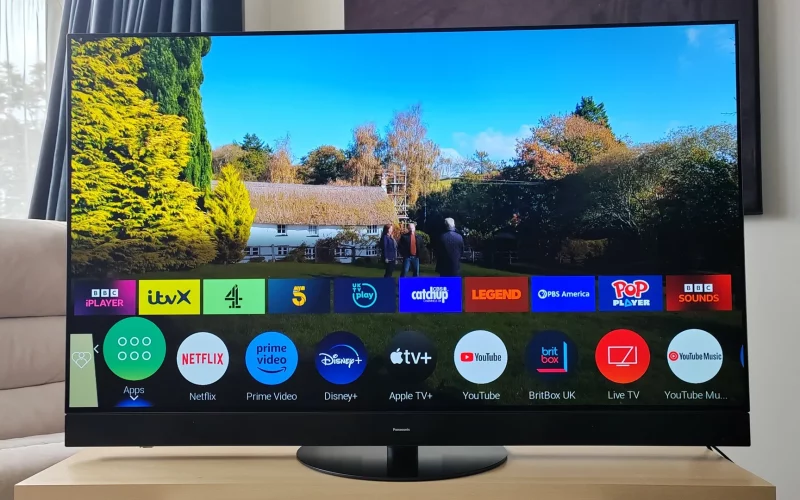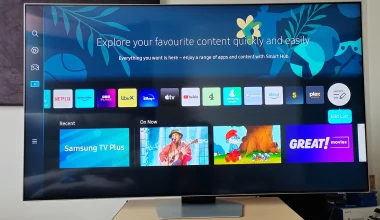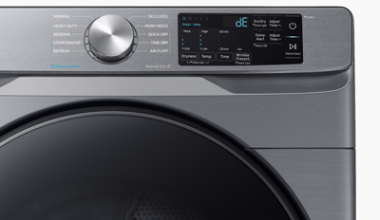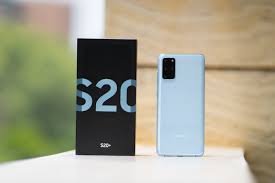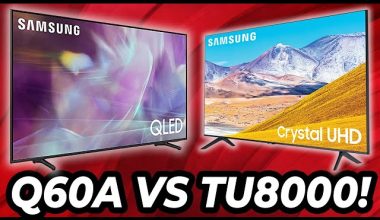A 55-inch TV typically measures about 48 inches wide. This measurement is based on a standard 16:9 aspect ratio, which most modern TVs follow. When choosing a TV, remember to account for the bezel, the frame around the screen, which can slightly increase the overall width. Be sure to measure your space to ensure a proper fit, especially if you’re planning on mounting it. Different brands and models might have slight variations, and understanding these can help you make the best choice. There’s more to consider when finding the perfect TV for your needs.
Understanding TV Dimensions
When you’re shopping for a new TV, understanding its dimensions is crucial to ensure it fits perfectly in your space. You don’t want to end up with a TV that’s too big for your entertainment centre or too small for your viewing distance. It’s essential to know not just the screen size but also the overall width, height, and depth of the TV.
The dimensions of a TV are typically listed in the product specifications, but it’s important to note that the advertised screen size, like ’55 inches,’ refers to the diagonal measurement of the screen. This doesn’t give you the complete picture of the TV’s actual footprint. You’ll need to check the specific width and height measurements, which can usually be found on the manufacturer’s website or in the product manual.
Read also: Fix Samsung Dryer hE Code
Additionally, consider the bezel size, which is the frame around the screen. Thinner bezels mean the TV will have a smaller overall footprint compared to older models with thicker bezels.
Don’t forget to account for the stand or wall mount, which can add to the overall height and depth. By paying attention to these details, you can ensure your new TV fits seamlessly into your home setup.
Diagonal Vs. Width
Many people mistakenly think a TV’s diagonal measurement will tell them everything they need to know about its width. However, the diagonal measurement only tells you the size of the screen from one corner to the opposite corner. It doesn’t account for the actual width and height of the TV, which are crucial if you need to fit it into a specific space.
To find the width, you need to understand that the diagonal measurement forms part of a right triangle with the width and height of the screen. The width can be calculated using the Pythagorean theorem, but don’t worry—you don’t need to do the math yourself. Manufacturers usually provide the width and height in the specifications.
For a 55-inch TV, the width is typically around 48 inches, though this can vary slightly depending on the model and the frame’s thickness. Knowing the width is essential for ensuring the TV fits on your wall or entertainment centre.
Standard Aspect Ratios
Most modern TVs, including 55-inch models, come with a standard aspect ratio of 16:9, which balances width and height for an optimal viewing experience. This ratio means that for every 16 units of width, there are 9 units of height. It’s the go-to choice for high-definition and ultra-high-definition content, making it perfect for both movies and sports.
Understanding aspect ratios helps you make more informed decisions when shopping for a TV. Here are three key points to consider:
- Content Compatibility: Most TV shows, movies, and streaming services are designed for a 16:9 aspect ratio, ensuring you won’t see black bars on the sides or top and bottom of your screen.
- Gaming: Video game consoles like the PlayStation and Xbox also utilize this ratio, giving you an immersive gaming experience with full-screen gameplay.
- Versatility: A 16:9 aspect ratio is versatile enough to display older 4:3 content without much distortion, and it adapts well for widescreen 21:9 content by adding minimal letterboxing.
Calculating TV Width
Determining the width of a 55-inch TV is straightforward if you know the aspect ratio and the diagonal measurement. Most modern TVs have a 16:9 aspect ratio, which means the screen’s width is 16 units for every 9 units of height. To calculate the width, you can use the Pythagorean theorem because the TV’s dimensions form a right triangle with the diagonal as the hypotenuse.
First, convert the aspect ratio to a usable form: 16 squared plus 9 squared equals 337. The square root of 337 is approximately 18.36. This number represents the ratio’s diagonal length units compared to the width and height units.
Next, to find the actual width, divide the TV’s diagonal measurement (55 inches) by the ratio’s diagonal length (18.36). This gives you approximately 2.996 inches per unit.
Including the Bezel
While you’ve calculated the screen’s width, it’s important to include the bezel for the TV’s total width. The bezel, which is the frame around the screen, adds extra inches that can affect where and how you place your TV. Modern TVs have slimmer bezels compared to older models, but they still need to be considered.
Typically, the bezel on a 55-inch TV can add about half an inch to 1.5 inches to each side of the screen.
Here’s how you can account for the bezel:
- Measure the Bezel: Use a ruler or tape measure to find the width of the bezel on each side of the TV.
- Add to Screen Width: Double the bezel width (since there are bezels on both sides) and add this to the screen width.
- Total Width: If your screen width is 48 inches and each bezel is 1 inch, then the total width would be 50 inches.
Measuring for Your Space
To make sure your 55-inch TV fits perfectly, start by measuring the dimensions of the space where you plan to place it. Grab a tape measure and note the width, height, and depth of the area. You’ll need these numbers to ensure your TV isn’t too snug or too loose in its designated spot.
Let’s break down the measurements you need to consider:
| Measurement | Description |
|---|---|
| Width | Horizontal space your TV will occupy |
| Height | Vertical space available for the TV |
| Depth | How far the TV can extend from the wall |
| Clearance | Extra space around the TV for ventilation |
| Furniture Size | Dimensions of the stand or cabinet |
Once you’ve gathered these measurements, compare them with the TV’s dimensions. Remember, a 55-inch TV typically has a width of about 48 inches and a height of around 27 inches, not including the stand. Ensure there’s enough clearance for ventilation to prevent overheating.
Wall Mount Considerations
Mounting your 55-inch TV on the wall not only saves space but also provides a sleek, modern look to your room. To ensure you get the best experience, you need to consider a few key factors before mounting your TV.
First, make sure the wall mount you choose is compatible with the VESA pattern on the back of your TV. Next, think about the type of wall you’re mounting it on, as drywall, brick, and concrete each requires different mounting hardware.
Here are three important considerations for mounting your TV:
- Wall Studs: Use a stud finder to locate and mark the studs on your wall. Mounting your TV on studs provides better stability and support.
- Cable Management: Plan how you’ll manage the cables behind your TV. Concealing them enhances the overall look and prevents clutter.
- Height and Angle: Decide on the optimal height and angle for mounting. The centre of the screen should be at eye level when you’re seated.
Optimal Viewing Distance
Finding the optimal viewing distance for your 55-inch TV can significantly enhance your watching experience. Sitting too close might strain your eyes, while sitting too far away can make it difficult to appreciate the screen’s details and resolution.
As a general rule, you should aim to sit between 1.5 to 2.5 times the diagonal screen size away from your TV. For a 55-inch TV, that translates to a distance of about 6.9 to 11.5 feet.
To find the perfect spot, measure the distance from your seating area to where the TV will be mounted or placed. This helps ensure you’re within the recommended range.
If you’re watching in 4K Ultra HD, you can sit closer to the screen without noticing pixelation, possibly around 5.5 to 8 feet away, allowing you to fully appreciate the higher resolution.
Don’t forget to consider the height of your TV as well. Ideally, the centre of the screen should be at eye level when you’re seated, reducing neck strain and providing a more immersive experience.
Comparing Sizes and Brands
When comparing sizes and brands of 55-inch TVs, it’s crucial to consider both the technical specifications and the reputation of the manufacturer. Different brands offer various features that can significantly affect your viewing experience.
For instance, some brands might excel in picture quality, while others focus on smart features or sound quality.
Consider these factors:
- Picture Quality: Look for TVs that offer 4K resolution, HDR support, and high refresh rates. Brands like Sony and LG are often praised for their superior picture quality.
- Smart Features: If you love streaming, check out the smart capabilities. Samsung’s Tizen and LG’s webOS platforms are user-friendly and packed with apps.
- Audio Performance: Don’t overlook sound quality. Brands like Sony often incorporate advanced audio technology to provide a more immersive experience.
Useful Video
Frequently Asked Questions
How Much Does a 55-Inch TV Typically Weigh?
You’re probably wondering how much a 55-inch TV typically weighs. Most 55-inch TVs weigh between 25 and 50 pounds. The exact weight depends on the brand and model, including whether it’s with or without a stand.
Can a 55-inch TV Fit in a Standard Car for Transport?
Yes, you can fit a 55-inch TV in a standard car, but you’ll need to fold down the back seats. Make sure to secure it properly to avoid damage during transport.
What Are the Energy Consumption Levels of a 55-inch Tv?
You’re curious about the energy consumption of a 55-inch TV. Typically, it ranges from 60 to 150 watts, depending on the model and settings. Checking the TV’s energy label can provide more specific details.
Are There Specific Brands Known for Lighter 55-Inch Tvs?
Yes, you’ll find specific brands known for lighter 55-inch TVs. Samsung and LG are often praised for their lightweight designs. Check their latest models if you’re looking for something easier to mount or move.
How Do I Clean the Screen of a 55-Inch TV Properly?
To clean your TV screen properly, turn it off and use a microfiber cloth. Gently wipe in circular motions. Avoid harsh chemicals; instead, lightly dampen the cloth with water or a screen-safe solution.
Conclusion
So, when you’re choosing a 55-inch TV, remember it’s more than just the diagonal measurement. Consider the width, including the bezel, and ensure it fits your space.
Think about wall mounting and optimal viewing distance to enhance your experience.
Comparing different brands and models can also help you find the perfect fit.
With these points in mind, you’ll be well-equipped to make an informed decision and enjoy your new TV to the fullest.
